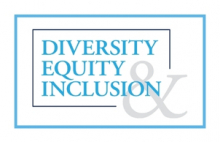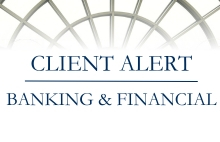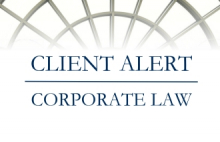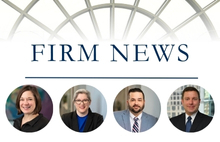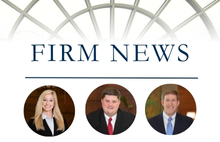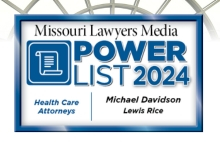First-Issued Interim Final Rule Gives Guidance on No Surprises Act
July 14, 2021On July 1, 2021, the U.S. Department of Health and Human Services (“HHS”), U.S. Department of Labor, U.S. Department of the Treasury and the Office of Personnel Management issued an Interim Final Rule (“IFR”) regulating the No Surprises Act. President Trump signed the No Surprises Act (the “Act”) into law on December 27, 2020 as part of the Consolidations Appropriation Act.
The much-anticipated IFR clarifies many of the patient protections established by the Act, which creates more universal protections against surprise medical bills and promotes transparency in medical billing and payments. The IFR was issued with a comment period that will last until September 7, 2021.
The protections under the Act and the IFR apply to emergency services (defined broadly to include post-stabilization services), non-emergency services furnished by out-of-network providers at in-network facilities, and air ambulance services furnished by out-of-network providers. These protections apply to group health plans, including self-insured plans, and health insurance issuers offering group or individual coverage with respect to plan or policy years beginning on or after January 1, 2022. They do not apply to programs such as Medicare, Medicaid, Indian Health Services, Veterans Affairs Health Care, or TRICARE, which already have balance billing prohibitions in place.
Highlights of the IFR, which will drastically change how group health plans and health insurance issuers pay certain out-of-network providers and administer benefits, are below.
Limits Patient Cost-Sharing
When services covered under the Act are provided by out-of-network providers, a patient’s cost-sharing cannot exceed the levels of cost-sharing applicable to services provided by in-network providers. Such cost-sharing must also be counted toward in-network deductibles and out-of-pocket maximums.
The IFR prescribes a “qualifying payment amount” (“QPA”) to determine patient cost-sharing limits for surprise medical bills from out-of-network providers. The amount is determined by an applicable All-Payer Model Agreement, if available. If no such agreement exists, the amount is determined by state law. If neither are available, the amount is determined by the lesser of the billed charge or the QPA.
The QPA is the group health plan’s or health insurance issuer’s median contracted rate for similar services in a similar facility and geographic area, calculated based on the rates under at least three provider contracts. Geographic regions are defined differently between non-air ambulance services and air ambulance services. For both non-air ambulance and air ambulance services, if there are less than three provider contracts for the region, the group health plan or health insurance issuer must broaden the region considered.
Bans Surprise Medical Billing and Limits Payment
Under the Act and IFR, balance billing for emergency services (defined broadly to include post-stabilization services), non-emergency services furnished by out-of-network providers at in-network facilities and air ambulance services furnished by out-of-network providers is generally prohibited and payment to these providers is limited. The payment amount is determined by an applicable All-Payer Model Agreement, if available. If no such agreement exists, the amount is determined by state law. If no state law applies, the amount must be agreed upon by the payor and the provider, or determined by an independent dispute resolution entity. The QPA will be considered as part of the independent review.
Mandated Disclosures
Disclosures of federal and state patient protections against balance billing by both providers and payors are mandated. Specifically, group health plans and health insurance issuers are required to disclose, in plain language, (1) restrictions on balance billing; (2) applicable state law restrictions on balance billing; (3) requirements under various federal laws preventing surprise medical billing (Internal Revenue Code Section 9816, ERISA Section 716, PHS Act Section 2799 A-1); and (4) contact information for state and federal agencies in order to report violations on balance billing restrictions. The disclosure should be made publicly available, included on their website, and detailed on every explanation of benefits. The Departments issued a model disclosure notice concurrently with the IFR that may, but is not required to, be used by providers and payors to satisfy the disclosure requirements.
Group health plans and health insurance issuers must make additional information available upon request in writing following a payment or notice of denial to providers, including the QPA for each service involved and certification of the QPA calculation.
Group health plans and health insurance issuers must also notify providers of the 30-day open negotiation period in the event the payment made pursuant to the methodology described under the IFR is not agreeable, and provide pertinent contact information. After the end of the negotiation period, the independent dispute resolution process may be initiated within four days.
Requires Consent for Out-of-Network Billing
With respect to post-stabilization services and non-emergency services delivered by out-of-network providers at in-network facilities, providers must give advance notice to patients before providing out-of-network care. The patient, by signing the consent form, may then agree to waive the protections afforded by the Act and to be responsible for the out-of-network amounts due outside of such protections. Among other things, the notice must include a good faith estimate of that amount to be paid for services that will be provided. Consent cannot be sought if the patient is receiving ancillary services (anesthesiology, radiology, etc.) at an in-network facility or urgent medical treatment.
Complaint Process
In addition to the above requirements, the Act directs HHS to establish a process to receive consumer complaints regarding violations of balance billing requirements. A complaint is to be reviewed by HHS within a certain timeline as described within the IFR. The IFR seeks comments on deadlines to file complaints as well as whether the complaint process should be extended beyond the QPA.
This IFR is the first regulation to be issued with two more expected on October 1, 2021 and December 27, 2021 that will detail disclosure requirements and the independent dispute resolution process.
To read the No Surprises Act or the IFR in full, click under "Resources" below.
Please contact Lynn Hinrichs, Jill McFarland, or your regular Lewis Rice attorney if you have any questions.

